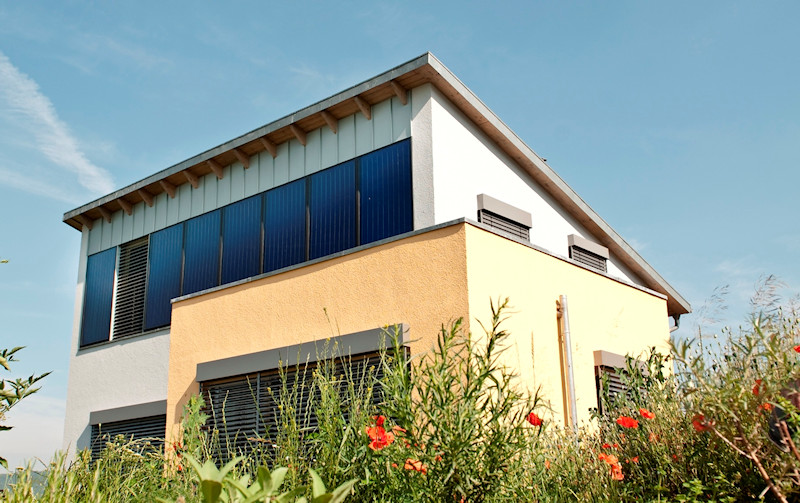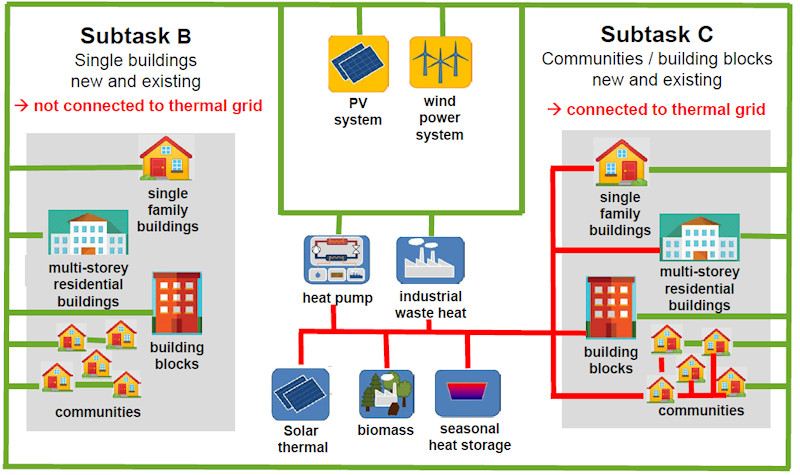Posted: May 2, 2021

Photo: Wagner Solar
During an online meeting from 1 to 2 July, the IEA Solar Heating and Cooling programme will launch a new global research platform called Task 66 Solar Energy Buildings. The researchers participating in the new task intend to develop and popularise a building standard focused on solar energy as the main energy source for heating, cooling and electricity generation. This sort of holistic approach has yet to become the norm when designing residential energy systems, Harald Drück, of German-based IGTE, said at a preparatory workshop in March. Drück has been chosen to lead the new three-year project, which will run until July 2024 and will be open to researchers and practitioners working in all fields related to solar architecture.
“Typically, solar combi systems installed in residential buildings in central Europe meet 20 % to 30 % of households’ hot water and space heating demand. We, however, are aiming for much higher solar fractions, at least 85 % of heat demand, 100 % of cooling demand and a minimum of 60 % of electricity generation” based on central European climate conditions, said Drück, who also heads R&D and the Smart City Concepts working group at German University of Stuttgart’s Building Energetics, Thermotechnology and Energy Storage Institute – IGTE. As the solar fraction targets will depend on local climate patterns, specifications will, of course, be defined for different regions represented by participants in the research group.
The workshop held in March was attended by about 40 experts from 14 countries, such as Australia, Austria, China, Denmark, Germany, Mexico and Switzerland. The following list sums up the objectives of Solar Energy Buildings as discussed at the event:
- Develop optimised, integrated and grid-interactive energy supply concepts that use intelligent control systems to meet demand for residential heating, cooling, electricity and electric vehicles.
- Create a portfolio of residential supply systems, taking into account existing and emerging solutions with the potential for successful, economically feasible deployment.
- Exploit synergies between portfolio technologies and improve the interplay between local energy generation, storage and consumption at building and district level to minimise carbon emissions.
“By growing our knowledge base and optimising the relevant technologies we can chart a path towards more solar energy buildings,” said Drück. According to the German Solar House Institute, solar thermal systems meet at least half the heating needs of about 2,200 residential and commercial buildings in the German-speaking area of central Europe – an extremely low number compared to the region’s total building stock.
Solar energy buildings designed within Task 66 will be fully in line with the requirements of nearly zero energy newbuilds according to the latest European Performance of Buildings Directive recast. The task will also cover both new and existing buildings, making the Solar Energy Buildings approach a perfect fit for the EU’s Renovation Wave strategy.
Grid-interactive energy systems
The Solar Energy Buildings task group will focus not just on single-family houses but also multi-storey ones, blocks of flats and neighbourhoods. The environmentally or economically sound solutions the researchers will investigate will have one of two distinctly different prerequisites: Either the house in question is connected only to the electric grid or connected to both the electric and a thermal grid.

Whole systems approach: The Task 66 research platform will analyse building energy management systems in terms of their heat and electricity generation capacity. Subtask B will focus on buildings that only have an electrical connection, whereas subgroup C will take a closer look at buildings which are also connected to a thermal grid.
Source: Solar Energy Buildings
To find out more about the workshop in July, go to https://task66.iea-shc.org/
Organisations mentioned in this article: